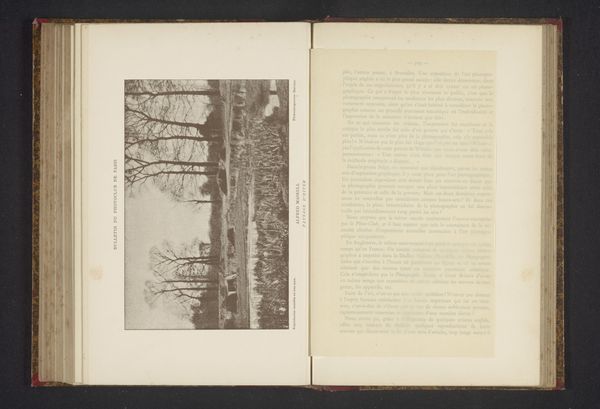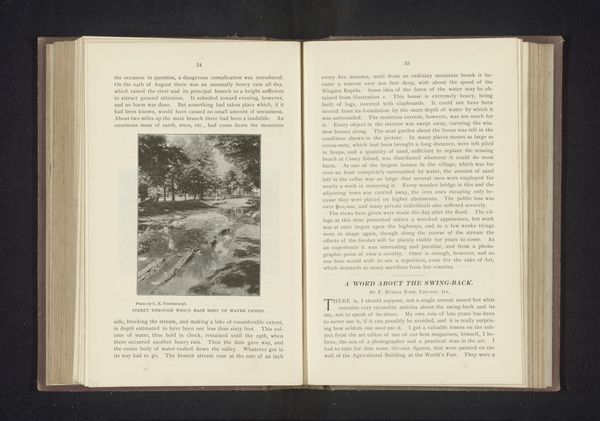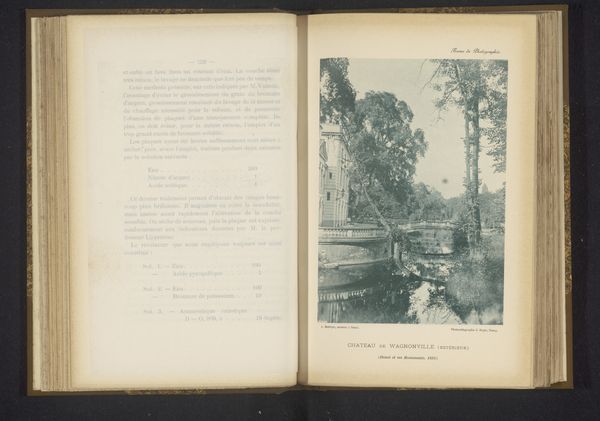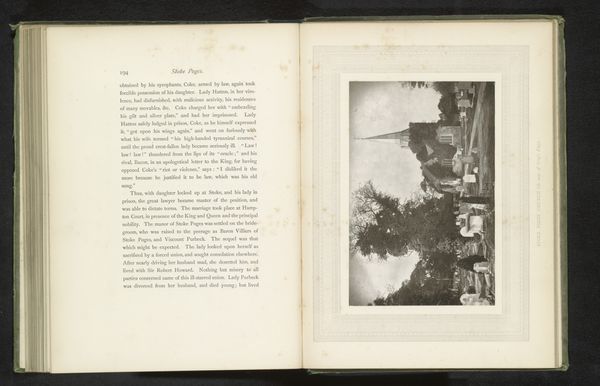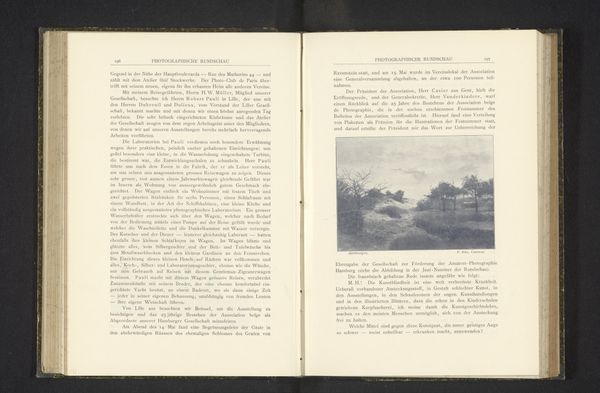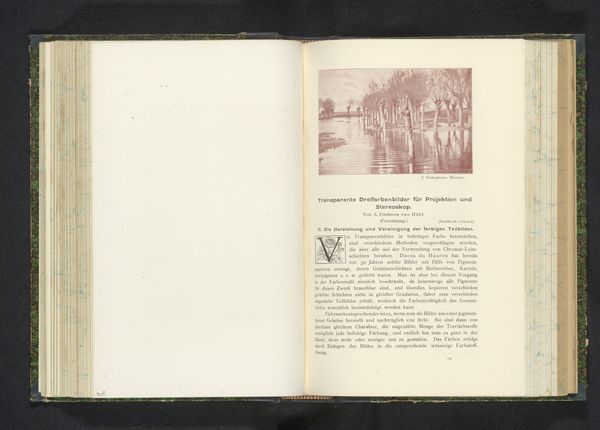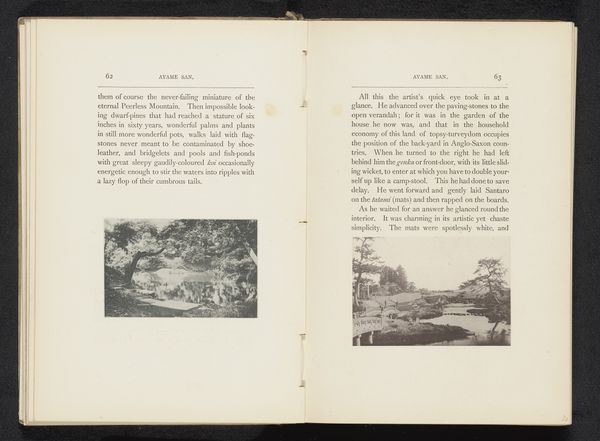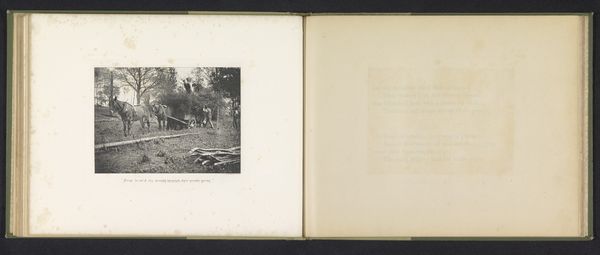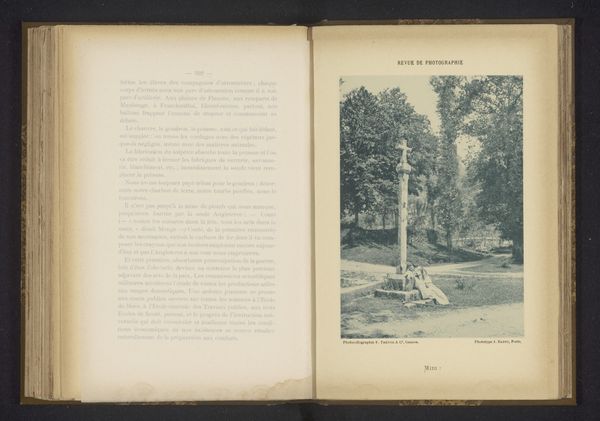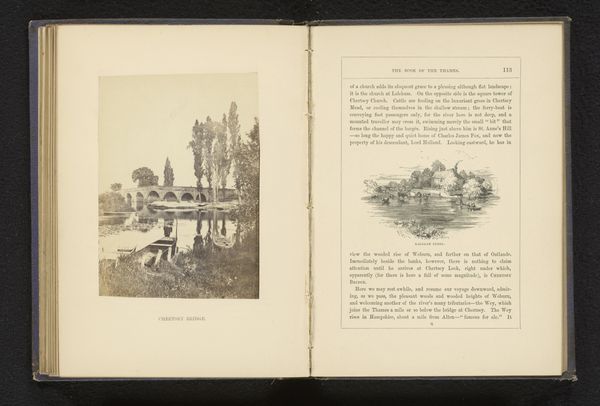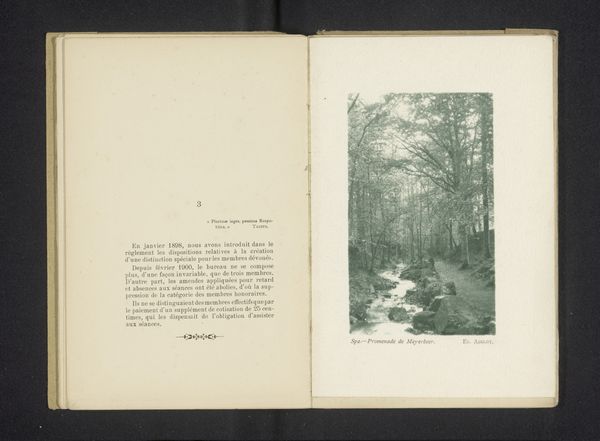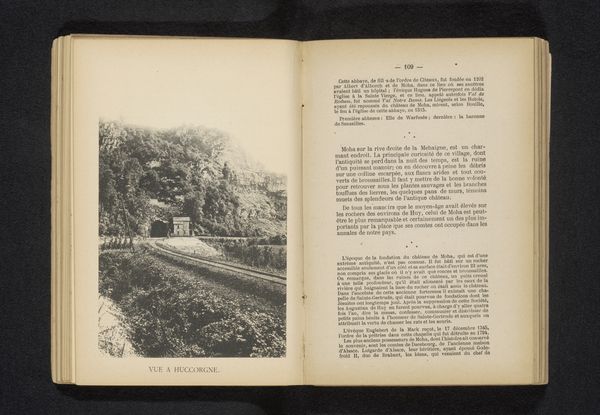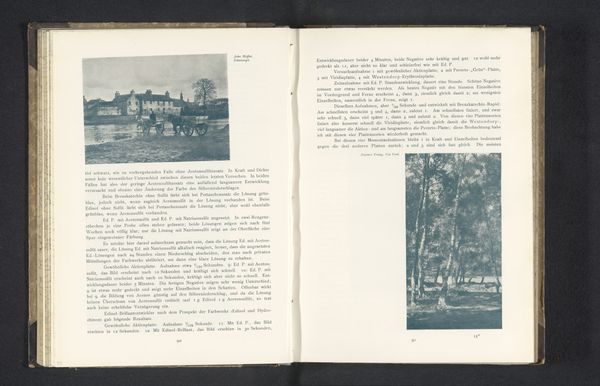
print, photography, albumen-print
#
still-life-photography
# print
#
book
#
landscape
#
text
#
photography
#
coloured pencil
#
park
#
watercolor
#
albumen-print
Dimensions: height 164 mm, width 108 mm
Copyright: Rijks Museum: Open Domain
Curator: What a wonderfully peaceful scene. This is a landscape photograph, presumed to be of a park and a ditch, taken sometime between 1884 and 1889 by W.J. Hickmott. The specific process used here is an albumen print. Editor: It feels very still and almost ghostly, doesn't it? There's a quiet solemnity to the composition. It almost makes me consider who this park excludes or invites in, especially at a time like that, almost Victorian England in monochrome. Curator: Exactly. Think about it, though—it's more than just an image; it's actually an albumen print presented within the pages of a book! Look closely, and you can see it nestled within the volume. It adds such a distinct layer to the context. Editor: That’s an interesting thought. So the picture isn’t the art piece in and of itself, but also the book alongside it, with text opposite the image, how intriguing. With printing in mind, I immediately think of questions around who gets to write and to what audiences they catered, especially from the lens of that period. Curator: Precisely, this work shows such deliberate intention, right down to its composition, but perhaps also in terms of framing photography through text itself. The book, combined with the scene, really invites us to ponder the narratives and the historical implications surrounding representation during that time. There is a quiet politics present. Editor: You're so right. There is indeed this silence within this stillness. It gives you such a different understanding than we are perhaps used to from other visual forms from this time, such as grand portraits. What this reveals instead are landscapes with exclusionary practices around them. What kind of access do marginalized communities have towards places such as this? The book acts as a sort of barrier, right? Like who can even afford or gain access to books at that time? Curator: Exactly, it really begs us to ask the question. As we wrap up, looking again, I see something incredibly beautiful and tragic both existing side-by-side. Editor: And the longer we analyze it, the more complex and engaging this piece truly becomes!
Comments
No comments
Be the first to comment and join the conversation on the ultimate creative platform.
